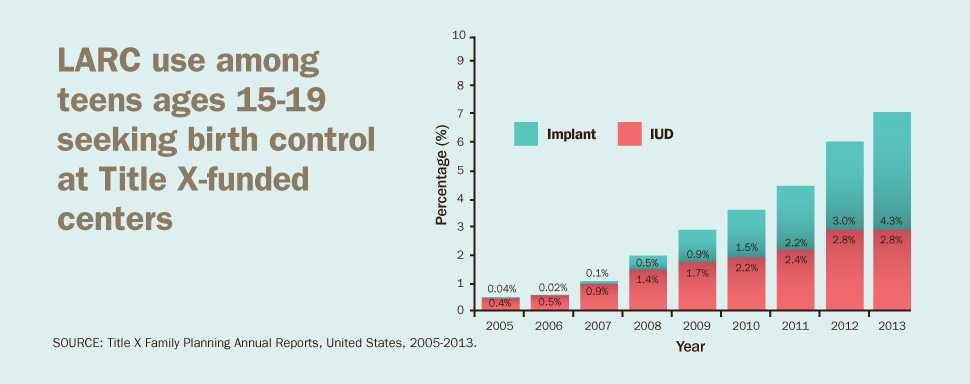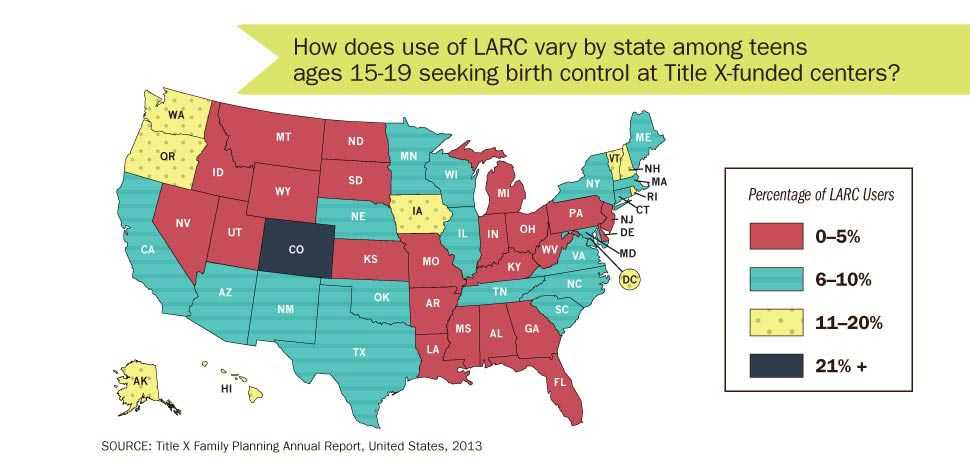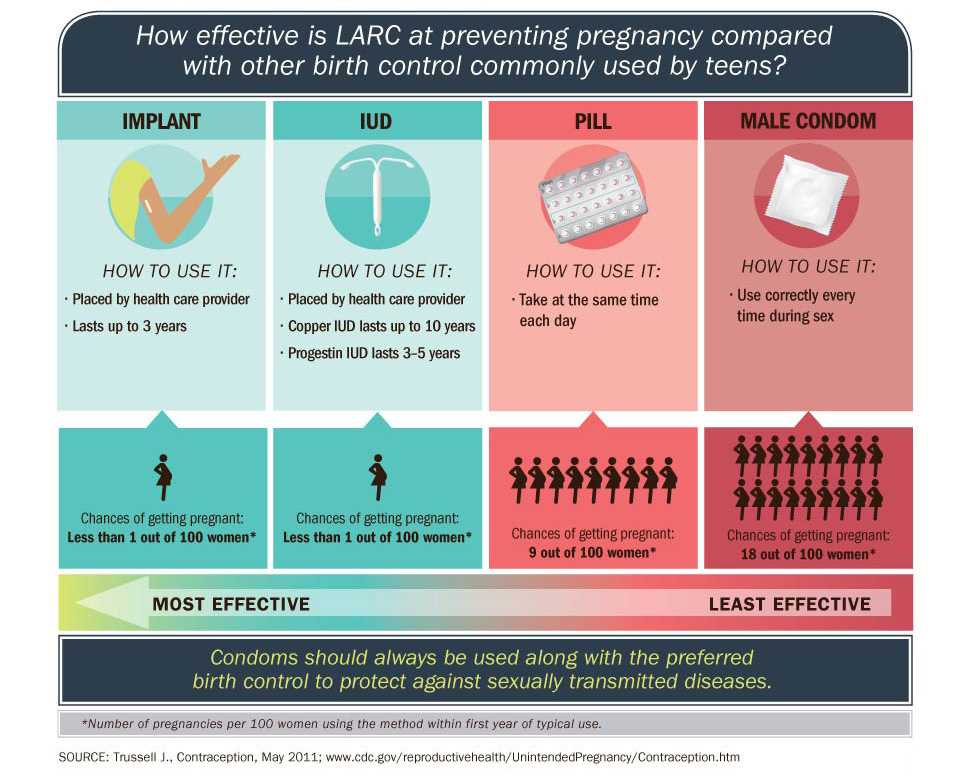Preventing Teen Pregnancy Infographics

Bar chart shows how use of long-acting reversible contraception (LARC) among teens ages 15-19 has increased in total from less than 1% in 2005 to 7% in 2013 at Title X-funded centers. It also show preference between the two LARC methods intrauterine device (IUD) and implant.

How does use of LARC vary by state among teens ages 15-19 seeking birth control at Title X-funded centers?
0-5%
- Alabama
- Arkansas
- Delaware
- Florida
- Georgia
- Idaho
- Indiana
- Kansas
- Kentucky
- Louisiana
- Michigan
- Mississippi
- Missouri
- Montana
- Nevada
- New Jersey
- North Dakota
- Ohio
- Pennsylvania
- South Dakota
- Utah
- West Virginia
- Wyoming
6-10%
- Arizona
- California
- Connecticut
- Illinois
- Maine
- Maryland
- Massachusetts
- Minnesota
- Nebraska
- New Mexico
- New York
- North Carolina
- Oklahoma
- South Carolina
- Tennessee
- Texas
- Virginia
- Wisconsin
11-20%
- Alaska
- District of Columbia
- Hawaii
- Iowa
- New Hampshire
- Oregon
- Rhode Island
- Vermont
- Washington
21% +
- Colorado

How effective is LARC at preventing pregnancy compared with other birth control commonly used by teens?
(In order from Most Effective to Least Effective)
IMPLANT
How to use it:
- Placed by health care provider
- Lasts up to 3 years
Chances of getting pregnant:
Less than 1 out of 100 women*
IUD
How to use it:
- Placed by health care provider
- Copper IUD lasts up to 10 years
- Progestin IUD lasts 3–5 years
Chances of getting pregnant:
Less than 1 out of 100 women*
PILL
How to use it:
- Take at the same time each day
Chances of getting pregnant:
9 out of 100 women*
MALE CONDOM
How to use it:
- Use correctly every time during sex
Chances of getting pregnant:
18 out of 100 women*
Condoms should always be used along with the preferred birth control to protect against sexually transmitted diseases.
*Number of pregnancies per 100 women using the method within first year of typical use.
- Page last reviewed: April 7, 2015
- Page last updated: April 7, 2015
- Content source:
- National Center for Chronic Disease Prevention and Health Promotion, Division of Reproductive Health
- Page maintained by: Office of the Associate Director for Communications (OADC)


 ShareCompartir
ShareCompartir